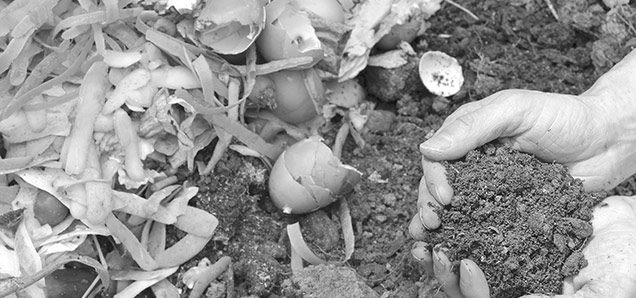How much food do you throw away?
 CREDIT: MARINA LOHRBACH/THINKSTOCK
CREDIT: MARINA LOHRBACH/THINKSTOCKA lot of households waste ends up in landfi lls and here at Fanshawe, 69 per cent of the waste should be put in composting bins.
Kailyn Smith is the environmental program co-ordinator.
We know that eating local and organic is better for our environment, but have you ever considered the impacts of the food you throw out?
An estimated $27 billion in Canadian food waste ends up in landfills or composting annually. Food waste in landfills leads to high levels of carbon and methane emissions; two well-known greenhouse gases that contribute to climate change. In fact, approximately 20 per cent of Canada’s methane emissions come from landfills.
Of that $27 billion of food waste, over 50 per cent is a result of Canadian households tossing food out. This could be a result of cooking or preparing too much food, not using food in time or throwing out leftovers.
In Toronto, a single-family home alone discards approximately 275 kg of food waste each year. That is nearly $600 worth of food waste.
The value chain impacts of producing food products are important to consider as well. Often retailers and grocers will throw out food items that are not pretty enough for consumers. This accounts for 11 per cent of the $27 billion of food waste. Additionally, 18 per cent of food waste is attributed to packaging and processing and three per cent is from transportation and distribution. It is evident that food waste can be an incredible waste of money and energy.
There are dozens of ways you can help reduce food waste:
Shop smart and buy exactly what you need to avoid unnecessary ingredients ending up in the trash. Buy only what a recipe calls for and avoid buying bulk if it isn’t necessary. Added bonus: this can save you money.
Monitor what you throw away. If you throw half a loaf of bread away every week, perhaps consider freezing half of the loaf when you buy it so it doesn’t go stale.
Use expiration dates as a guideline. Use your best judgment; if your food product still smells, looks and tastes okay then it’s probably fine.
Use up older food items before diving into new groceries. Just remember FIFO: first in, first out.
Always eat your leftovers or repurpose them for new meals. Perhaps those veggies could go into a delicious soup or brown bag last night’s dinner for a free lunch the next day.
Never throw food out. If you cannot use up your food, consider donating it to a local food bank, or even check in with local farmers who could feed it to their livestock. If those aren’t options for you, perhaps you could consider composting at home.
Here at Fanshawe, 69 per cent of the waste heading to landfill is comprised of food waste or items that could be diverted through composting practices. We have plenty of compost bins around campus and we encourage students to compost their food waste. Our compost stream accepts all food scraps – including meat and bones – coffee grinds and filters, tea bags, soiled paper products such as napkins and paper towels and compostable containers. To learn more about our composting program please contact us at recycle@fanshawec.ca.













